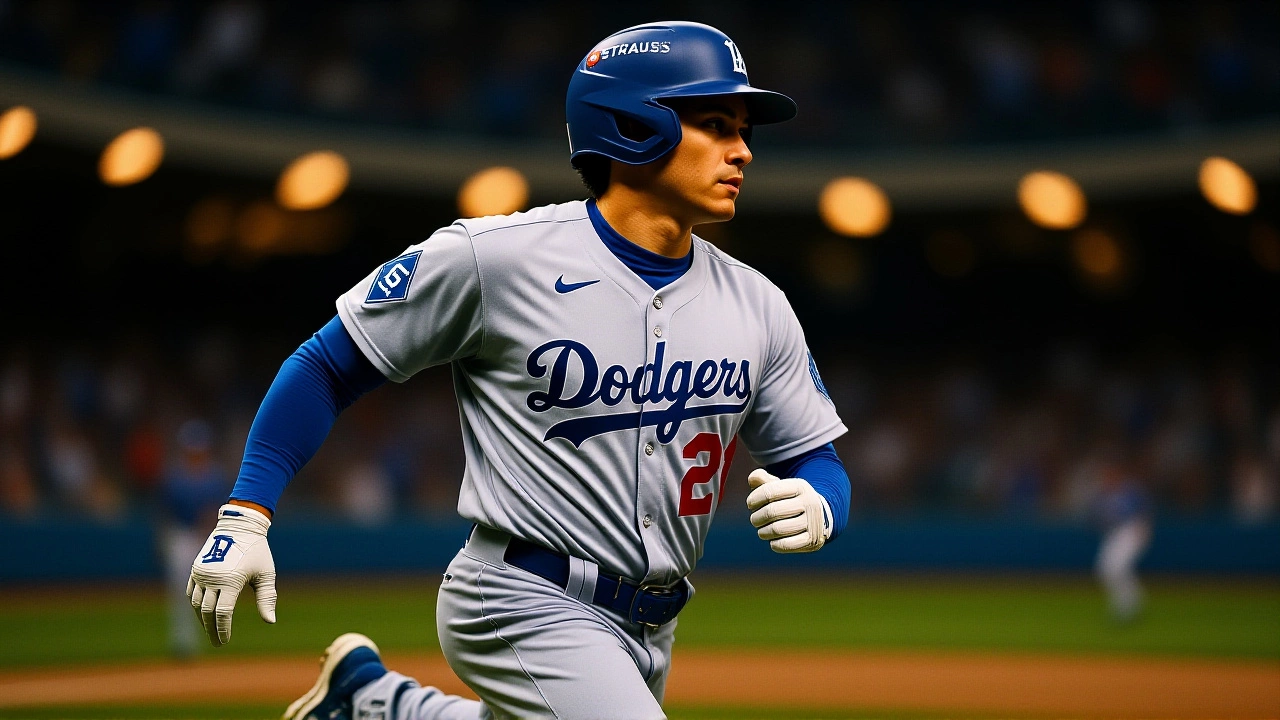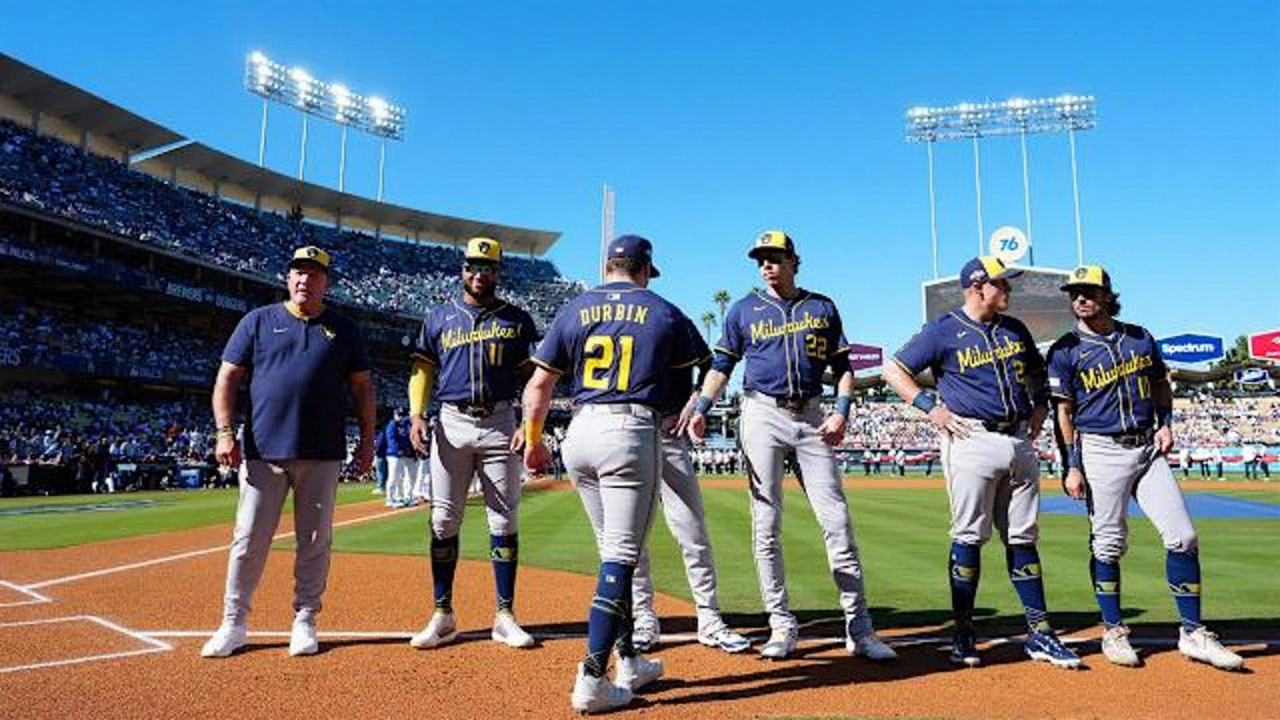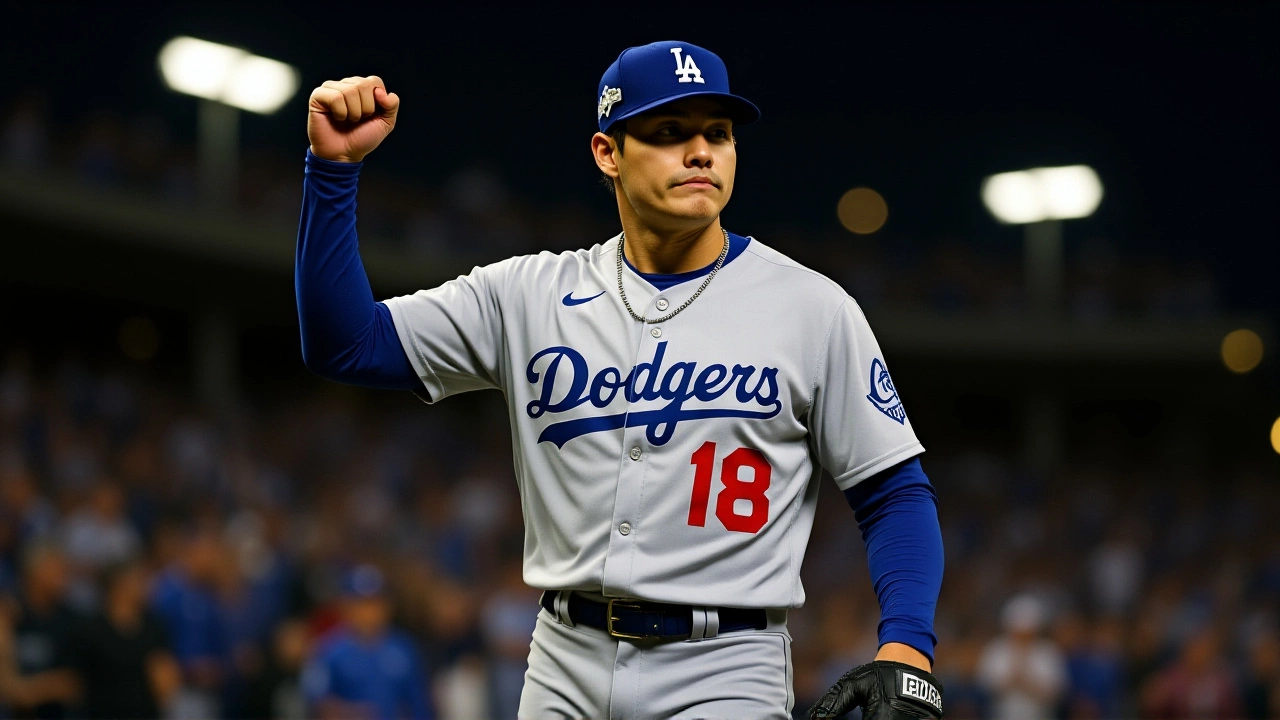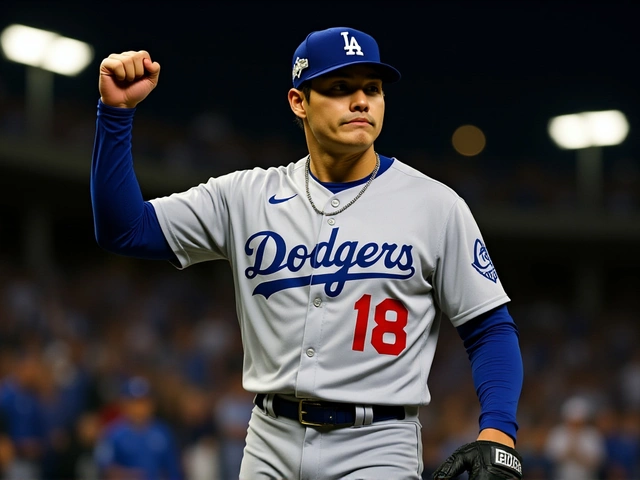When Shohei Ohtani, designated hitter of the Los Angeles Dodgers launched a triple down the right‑field corner of Dodger Stadium on October 16, 2025, the Dodgers seized a 3‑0 series lead over the Milwaukee Brewers in Game 3 of the National League Championship Series. The run‑filled inning set the tone for a night where pitching, defense, and a splash of offensive fireworks combined to put Los Angeles one victory away from the World Series. NLCS drama unfolded under a clear California sky, and the stakes couldn’t have been higher for a Brewers squad that had just set a franchise record with 97 wins.
Series Overview and Stakes
Both clubs entered the postseason with impressive resumes. The Dodgers finished the regular season 93‑69, boasting a 52‑29 record at home, while the Brewers clinched the NL Central with a 97‑65 mark, their best win total in club history. Yet, the Dodgers have a recent habit of rubbing shoulders with Milwaukee in the playoffs – this marks the third defeat of a Brewers team by Los Angeles in the past eight years.
What made Game 3 crucial was the possibility of a sweep. A best‑of‑seven series can tilt dramatically after three straight losses, and the Brewers were staring at their first playoff series sweep longer than a best‑of‑three format. The wind-down of the series also meant that a "if necessary" Game 5 was penciled for October 18, with the odds heavily favoring Los Angeles (57.1% win probability vs. 42.9% for Milwaukee, according to betting markets).
Game 3 Highlights
Opening the game, Ohtani snapped a 29‑at‑bat slump with a triple that landed just inside the right‑field fence. Right fielder Jackson Chourio seemed momentarily confused, allowing the ball to drop for the extra base. Mookie Betts followed with an RBI double to right‑center, driving Ohtani home and putting the Dodgers on the board.
Betts himself was only a step away from scoring when the throw in from the outfield arrived late, letting him sit on second. Shortly after, Will Smith added a single, and a quick squeeze play brought both runners home, pushing the lead to 3‑0 by the end of the first inning.
Milwaukee tried to rally. Devin Durban produced a triple in the second, and Chourio later doubled to spark a brief rally. Unfortunately for the Brewers, the Dodgers' bullpen shut the door, limiting any run‑scoring opportunity to a solitary run in the sixth inning.
Pitching Dominance
Los Angeles’ rotation has been a textbook example of consistency. Across the first three games, the Dodgers' four starters logged 28 2/3 innings, surrendered just two earned runs, and fanned 35 batters. That translates to a sub‑2.00 ERA and a strikeout‑per‑nine‑innings rate north of 11, numbers that would impress any analyst.
On the opposite side, Brewers ace Aaron Ashby tried to keep his team in the contest, but his “big bender” surrendered a swing‑and‑miss from Smith in the third, a swing that would turn into a crucial out.
Veteran left‑hander Freddie Freeman (though primarily a hitter) praised the staff, noting that “the guys are hitting their spots, and the catcher’s game‑calling is on point.” Their composure kept the Brewers from stringing together more than two hits in any inning.

Player Performances and Stats
Statistically, the series has highlighted the power of both teams. Ohtani entered the postseason after a 55‑home‑run, .282‑average regular‑season campaign. Betts, with a .295 average and a .502 slugging line, contributed a double and a single in Game 3. For Milwaukee, left‑fielder Christian Yelich posted 29 homers and 103 RBIs in the regular season, while right‑fielder Sal Frelick posted a .288 average and a .351 OBP.
Even with those numbers, the Brewers couldn’t translate regular‑season success into postseason runs. Their collective OPS of .847 in the regular season fell to .614 in the first three NLCS games, underscoring the difficulty of facing Los Angeles’ elite pitching.
On the defensive side, Chourio’s misplay on Ohtani’s triple was the only notable lapse for the Brewers; otherwise, the fielders performed cleanly, committing just one error across the series.
Historical Context and Impact
The 2025 NLCS adds another chapter to a rivalry that has seen the Dodgers thwart Milwaukee’s postseason hopes three times in the last eight years. Prior to this series, the Brewers had never been swept in a playoff series longer than a best‑of‑three, making the 3‑0 deficit a historic low point.
For the Dodgers, a sweep would be their first NLCS shutout since the 2020 bubble playoffs, and it would propel them toward a World Series matchup that could feature another all‑West showdown. The franchise’s last championship came in 2020, and the core of Ohtani, Betts, and Freeman is itching for a repeat.
Meanwhile, Milwaukee’s front office faces a familiar question: how to convert regular‑season dominance into postseason success? With a young core and a manager committed to aggressive baserunning, the Brewers will likely reassess their approach before the next season.

Looking Ahead to Game 5
If the series stretches to October 18, the Dodgers will enter the decisive game with a rested bullpen and a confident batting order. The Brewers, on the other hand, will need to razor‑sharp their pitching strategy and perhaps spark a spark‑plug performance from Yelich or Freeman.
Analysts on the TBS broadcast team – including former pitcher Pedro Martínez and former outfielder Curtis Granderson – argue that Ohtani’s mechanical adjustments, noted by his “front‑shoulder rotation,” could make the difference in the final game. If he continues to “whip the bat down the corner” as he did on that opening triple, Los Angeles could seal the series in four.
Whatever the outcome, the NLCS has already delivered classic moments, and fans on both coasts will be glued to their screens as the drama reaches its climax.
Key Facts
- Game 3 final score: Los Angeles Dodgers 6, Milwaukee Brewers 1.
- Series standing: Dodgers lead 3‑0.
- Ohtani’s triple marked his first extra‑base hit in 29 at‑bats.
- Dodgers rotation: 28 2/3 innings, 2 earned runs, 35 strikeouts.
- Potential Game 5 scheduled for October 18, 2025, at Dodger Stadium.
Frequently Asked Questions
How does the Dodgers' pitching advantage affect the Brewers' chances in a potential Game 5?
Los Angeles’ staff has posted a sub‑2.00 ERA and a 12‑K/9 rate in the series. Milwaukee would need to neutralize that by striking early and forcing the Dodgers into a longer bullpen usage, which has not happened yet. Without a major shift in pitching strategy, the odds remain heavily stacked toward the Dodgers.
What historical factors make this NLCS sweep significant for the Brewers?
It marks the first time the Brewers have been swept in a playoff series longer than a best‑of‑three. The defeat also continues a pattern of losing to the Dodgers in three of their last eight postseason appearances, highlighting a rivalry that has cost Milwaukee several potential deep runs.
Which players are most likely to change the series narrative if Game 5 goes the distance?
For Los Angeles, Ohtani’s bat and Freeman’s power can quickly tilt the game. For Milwaukee, a hot streak from Christian Yelich or a dominant outing by Aaron Ashby could keep the club alive. A clutch hit from Sal Frelick would also spark a much‑needed rally.
What does a Dodgers victory mean for the upcoming World Series matchup?
A win would send Los Angeles into the World Series with momentum and a rested staff, likely setting up an East‑vs‑West showdown. The Dodgers’ blend of power hitting and elite pitching makes them a formidable opponent for any National League champion.
How did the broadcast team on TBS evaluate Ohtani’s performance?
Analysts Pedro Martínez and Curtis Granderson highlighted Ohtani’s refined front‑shoulder mechanics, noting that his triple showed he’s “keeping the bat on the ball” and “whipping it down the corner” – a promising sign for the rest of the series.

